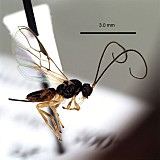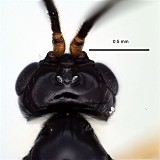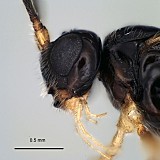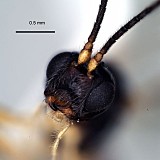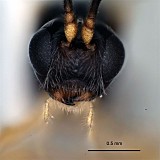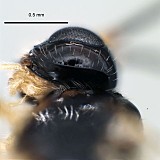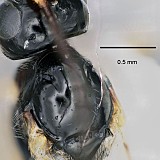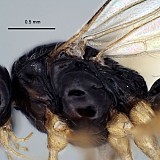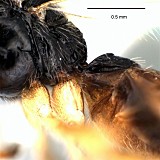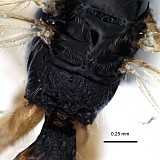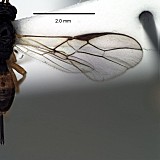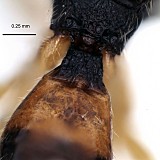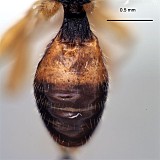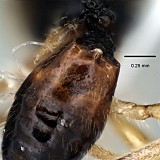Opius peleus Fischer, 1970
Opius peleus: Marsh 1974: 287 (synonymy); Marsh 1979 : 210 (catalog); Wharton and Norrbom 2013: 16-18, 54-57 (key, diagnosis, distribution, host records).
Opius (Merotrachys) peleus: Fischer 1977: 655, 695–697 (key, redescription); Fischer 1979: 264 (key); Yu et al. 2005, 2012 (electronic catalogs).
Opius telephosi Fischer, 1970: 812–815. Synonymized by Marsh (1974: 287).
Fischer (1977) placed O. peleus in the subgenus Merotrachys, which he defined in part by the presence of sculpture on the second metasomal tergum (T2). In the holotype, the striate sculpture on T2 is more distinct than in the specimens reared from Strauzia in Tennessee. Sculpture is variable in the Tennessee specimens, with some individuals exhibiting virtually no obvious sculpture while others are weakly striate or punctato-striate. In either case, the sculpture in O. peleus is distinctly different from that found in members of the ingenticornis species group, most of which have previously been included in Merotrachys (Wharton et al. 2013). Opius peleus also lacks the large pronope and complete dorsal carinae on the petiole (T1) characteristic of members of the ingenticornis group.
Holotype: Male, deposited in AEIC.
There are no specimens currently determined for this OTU, or those specimens determined for this OTU are not yet mappable.
Wattacoo, Pickens Co., S. C.
V. 27. 61
G. F. Townes
This material is based upon work supported by the National Science Foundation under Grant Numbers DEB 0949027 and DEB 0328922 with REU supplement 1313933.
Any opinions, findings, and conclusions or recommendations expressed in this material are those of the author(s) and do not necessarily reflect the views of the National Science Foundation.

